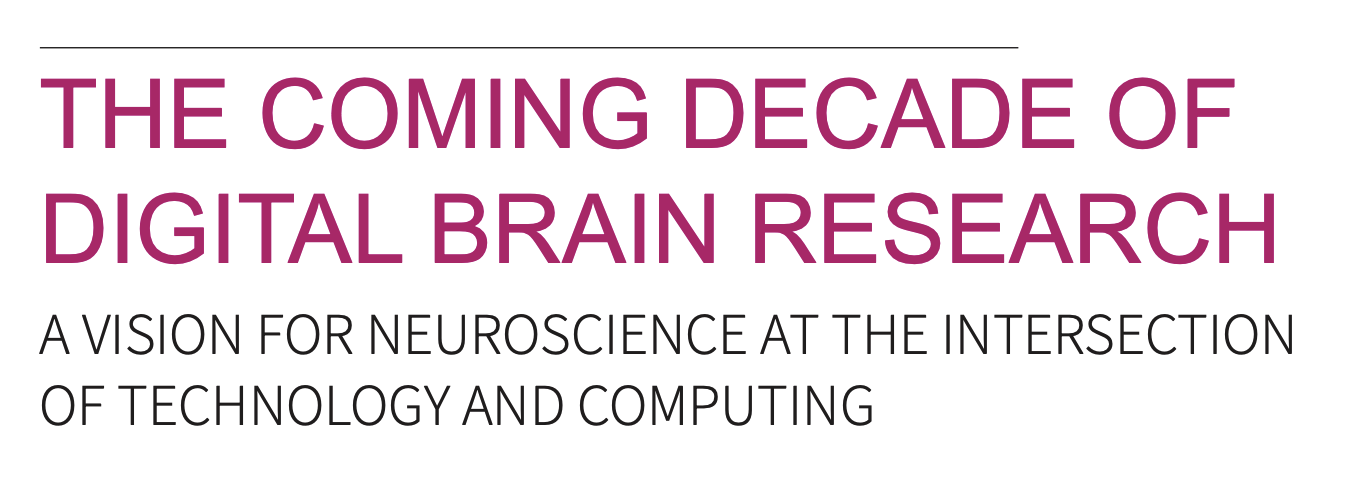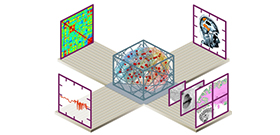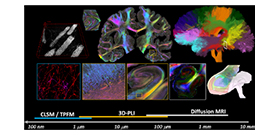Strategy and Vision
Pioneering digital brain research
The Human Brain Project (HBP) was one of the largest research projects in Europe. As a European Future and Emerging Technologies (FET) Flagship, the HBP was a long-term and large-scale research initiative that ambitiously pioneers digital brain research.
Its aim was to gain an in-depth understanding of the complex structure and function of the human brain with a unique interdisciplinary approach at the interface of neuroscience and technology.
HBP scientists employed highly advanced methods from computing, neuroinformatics and artificial intelligence to carry out cutting-edge brain research. The acquired knowledge was translated into novel applications in medicine and technological advances. Researchers of the HBP also addressed the social and ethical implications that arose from the research.
To facilitate the integration of brain science across disciplines and national borders, the HBP built a digital research infrastructure: EBRAINS is an open platform that provides access to a plethora of digital tools, models, data and services, thus enabling collaboration on a very large scale.
The new type of digital brain research championed by the HBP introduces a symbiotic relationship between neuroscience and Information and Communication Technology (ICT), in which researchers and engineers jointly ‘co-design’ technical solutions that are tailored to scientific needs.
The HBP used these powerful methods for advances in three focus areas:
(1) Multiscale investigation of brain networks, across different spatial and temporal scales
(2) The significance of brain networks in processes underlying consciousness and disorders of consciousness
(3) The development of artificial neural networks derived from the brain
Concept Papers
The HBP scientists specified their goals, scientific vision and progress at regular intervals in a series of high-level papers. You can find them below.
The coming decade of digital brain research - A vision for neuroscience at the intersection of technology and computing
Imaging Neuroscience 2024, DOI: https://doi.org/10.1162/imag_a_00137

The position paper outlines a vision for neuroscience at the intersection of technology and computing and stresses how a systematic approach will be essential in meeting the pressing medical and technological challenges of the coming decade.
A first version of the living document was published in February 2022 on Zenodo:
https://doi.org/10.5281/zenodo.6345820.
The final version of the position paper was published in April 2024 in Imaging Neuroscience:
https://doi.org/10.1162/imag_a_00137.
Click here to read the Executive Summary.
Linking brain structure, activity and cognitive function through computation.
eNeuro 2022, DOI: https://doi.org/10.1523/ENEURO.0316-21.2022

In this article, fifteen leading scientists of the European Human Brain Project (HBP) outline how a new culture of collaboration and an era of digitalisation has transformed neuroscience research over the last decade. The authors highlight the increasing need for digital tools and describe how HBP scientists employ highly advanced methods from computing, neuroinformatics, simulation and artificial intelligence to carry out cutting-edge brain research. The HBP researchers outline their scientific approach and illustrate the potential of the EBRAINS research infrastructure for neuroscience research.
The Human Brain Project—Synergy between neuroscience, computing, informatics, and brain-inspired technologies.
PLOS Biology 2019, https://doi.org/10.1371/journal.pbio.3000344

In the 2019 PLOS Biology community article, the Human Brain Project researchers give an overview of the Project’s science and infrastructure approach, as well as opportunities for the scientific community to make use of novel computational resources for neuroscience. The scientists describe their progress towards building the open European brain research infrastructure, which became EBRAINS.
https://www.humanbrainproject.eu/en/follow-hbp/news/the-hbp-driving-synergy-between-neuroscience-and-technology/
The Human Brain Project: Creating a European Research Infrastructure to Decode the Human Brain.
Neuron 2016, http://dx.doi.org/10.1016/j.neuron.2016.10.046
A concept paper published in the journal Neuron in 2016 laid out the framework for many of the successful developments and results of the HBP. It centred the Project on the idea of a common research infrastructure for brain-related research in Europe and described the potential to drive advances in basic science, medicine and technology. In the same year, six prototype research platforms were opened for the community. Later integrated into the single access EBRAINS system, they became the core of the unified resources and services offered by the HBP via EBRAINS.



